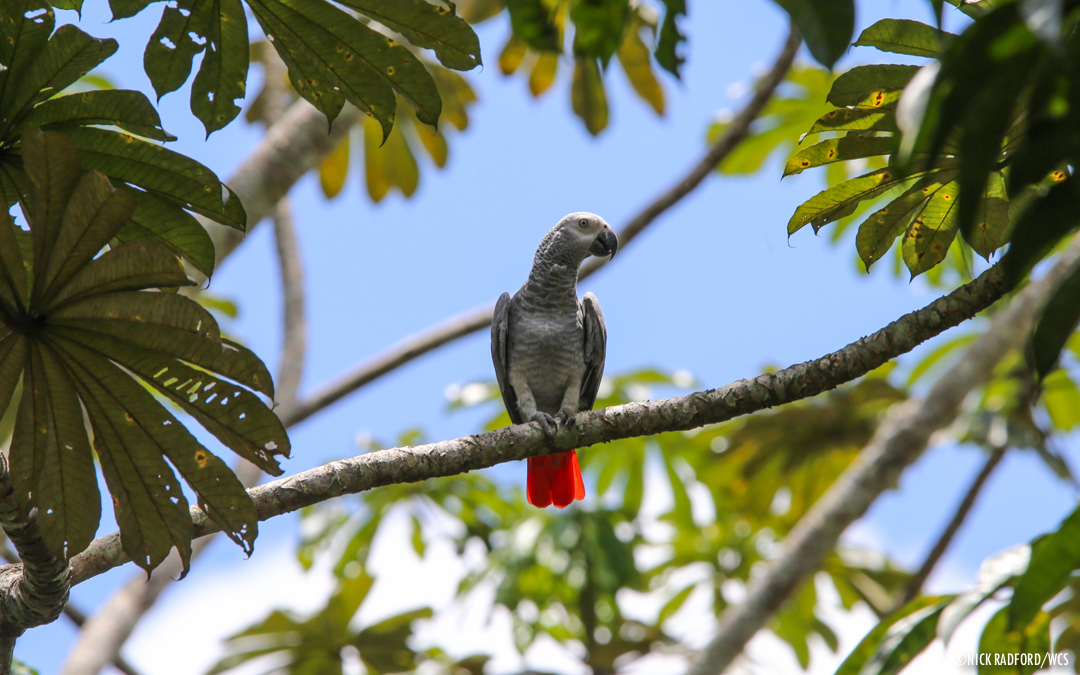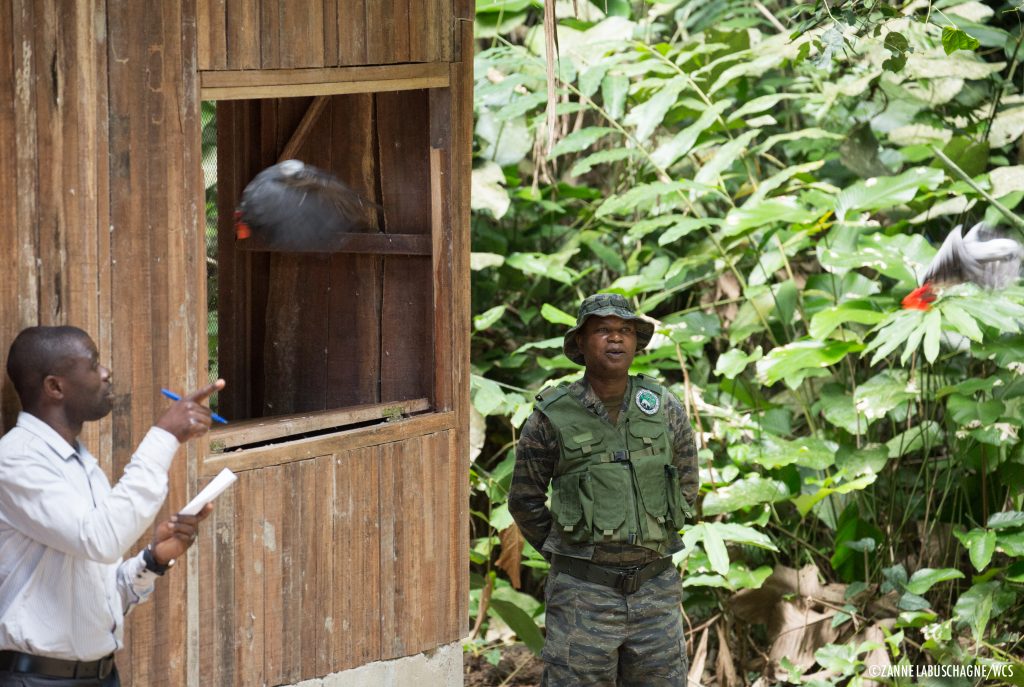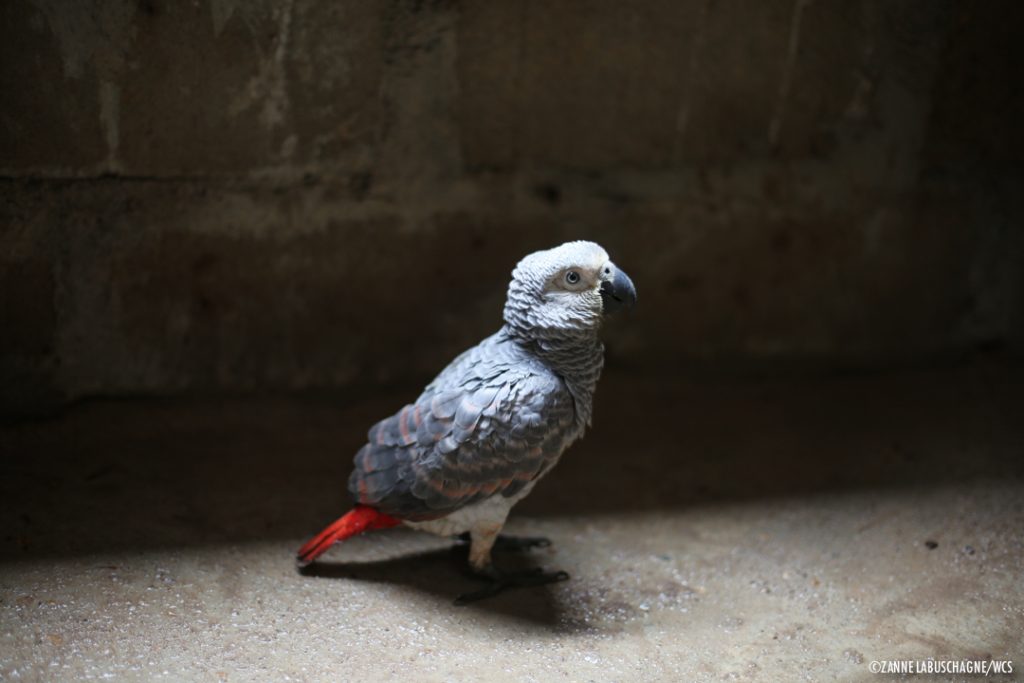
Parrots fly free from Bomassa Rehabilitation Centre
On Saturday the 8th of September 36 African grey parrots (Psittacus erithacus) were released from the Bomassa Rehabilitation Centre in the periphery of the Nouabale-Ndoki National Park. These parrots were part of a group of over fifty that had been recovering at the facility since late December last year.
Recovery is a long road for these parrots, seized by law-enforcement teams working in the area. Both capture and transportation by trappers can cause damage to the parrot’s flight feathers and wings. Under the care of a team of dedicated parrot caretakers from Bomassa village, working for the Nouabale-Ndoki National Park, the seized parrots housed at the facility over the past 10 months have recovered well.

Carried out in the presence of Mouanga Jerry Tanny, the Departmental Director of the Ministry of Forestry Economy, and Marcel Ngangoue, the Nouabale-Ndoki National Park warden, the first release of parrots from the Bomassa Parrot Rehabilitation facility was a great success. Pairs of parrots were seen flying over the camp, and as the afternoon progressed, their melodic songs and dulcet chatters could be heard from the forest canopy around and above the Bomassa headquarters of the Nouabale-Ndoki National Park. Fruiting season is currently at its peak meaning there is an abundance of food for the released parrots while they are rediscovering how to survive in the wild.
All the released parrots wear a numbered leg ring that, if found again, allow them to be identified as individuals released from the Bomassa Rehabilitation Centre. Food has been left out around the facility for several days following the release to assist the newly freed parrots, and possible re-visits to the cage site are being monitored with camera traps.
”The parrots seem to have adjusted wonderfully well back into the once-lost freedom. The fact that we have seen them eating and pairing up in the canopies around the cage site, and no sightings in our camera traps of individuals returning to the cage to roost or eat the fruit we have left for them - indicate that they are finding enough food, shelter and social interaction. - Eeva Kuisma, WCS Wildlife Health Program
Calixte, the first parrot to arrive at the Bomassa centre, was not released this time. He will require more time to recover and sadly may never fly again – not uncommon for feticheurs, the parrots used by poachers to call in wild parrots during capture missions, which have been extensively handled. Calixte was recently featured in a book written and illustrated by the Fifth graders at the P.S. 107 John W. Kimball Learning Centre, an elementary school in Park Slope, Brooklyn. The year-long project was a collaboration between P.S. 107’s Beast Relief committee and the the Wildlife Conservation Society (WCS). All proceeds from sale of the book will go directly to the rehabilitation of African grey parrots in the Republic of Congo.

The next step for the Bomassa Parrot Rehabilitation Centre will be the construction of a large flight cage to allow the parrots to train their flight muscles gradually before release, and also provide more natural and relaxed surroundings for the individuals that require a longer period to recover.

